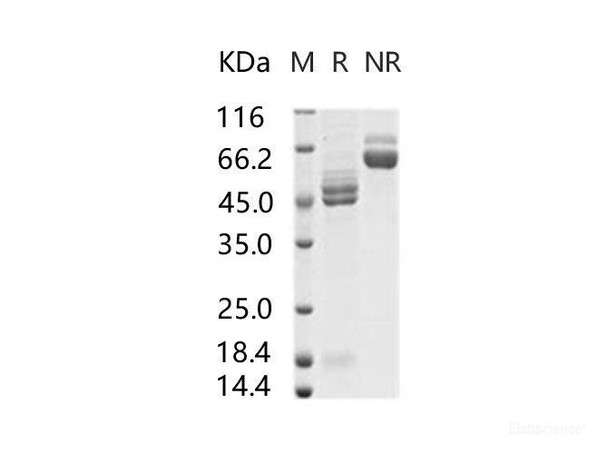| Sequence: | Met 1-Thr 529 |
| Accession: | P03420.1 |
| Storage: | Generally, lyophilized proteins are stable for up to 12 months when stored at -20 to -80°C. Reconstituted protein solution can be stored at 4-8°C for 2-7 days. Aliquots of reconstituted samples are stable at < -20°C for 3 months. |
| Shipping: | This product is provided as lyophilized powder which is shipped with ice packs. |
| Formulation: | Lyophilized from sterile 50mM Tris, 100mM NaCl, pH 8.0, 10% glycerol Normally 5 % - 8 % trehalose, mannitol and 0.01% Tween80 are added as protectants before lyophilization. Please refer to the specific buffer information in the printed manual. |
| Reconstitution: | Please refer to the printed manual for detailed information. |
| Background: | Human respiratory syncytial virus (HRSV) is the most common etiological agent of acute lower respiratory tract disease in infants and can cause repeated infections throughout life. It is classified within the genus pneumovirus of the family paramyxoviridae. Like other members of the family, HRSV has two major surface glycoproteins (G and F) that play important roles in the initial stages of the infectious cycle. The G protein mediates attachment of the virus to cell surface receptors, while the F protein promotes fusion of the viral and cellular membranes, allowing entry of the virus ribonucleoprotein into the cell cytoplasm. The fusion (F) protein of RSV is synthesized as a nonfusogenic precursor protein (F), which during its migration to the cell surface is activated by cleavage into the disulfide-linked F1 and F2 subunits. This fusion is pH independent and occurs directly at the outer cell membrane, and the F2 subunit was identifed as the major determinant of RSV host cell specificity. The trimer of F1-F2 interacts with glycoprotein G at the virion surface. Upon binding of G to heparan sulfate, the hydrophobic fusion peptide is unmasked and induces the fusion between host cell and virion membranes. Notably, RSV fusion protein is unique in that it is able to interact directly with heparan sulfate and therefore is sufficient for virus infection. Furthermore, the fusion protein is also able to trigger p53-dependent apoptosis. |






